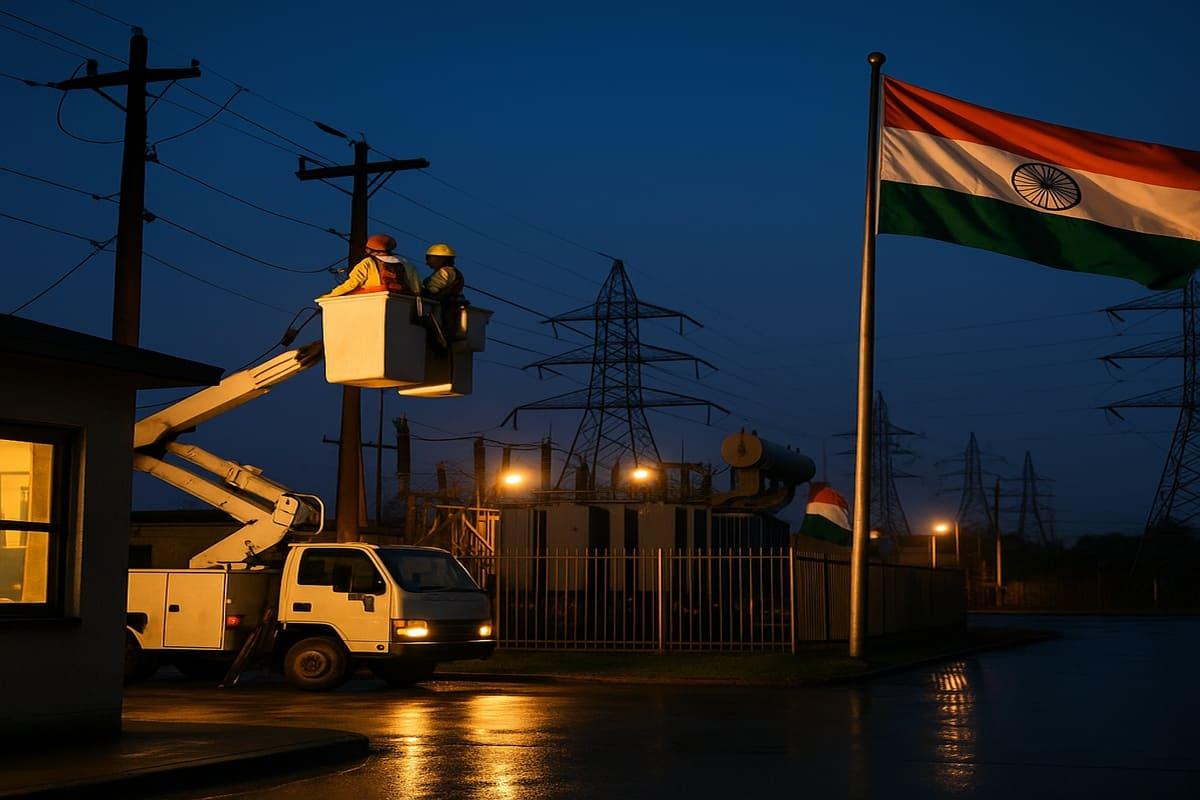India Weighs $12 Billion Bailout to Fix State Power Distributors
By Tredu.com • 10/29/2025
Tredu

What is on the table and why it matters
New Delhi is considering a rescue package worth more than 1 trillion rupees, about $12 billion, to stabilize state-run power distribution companies that sit at the core of India’s electricity system. The plan links central funding to reforms, including privatization or public listings within three years, minimum purchases from private generators, and shared responsibility for old debts. The push aims to reduce chronic cash losses that have strained utilities and slowed payments across the power chain.
The reform levers attached to the bailout
According to the proposal under discussion, states would qualify for infrastructure loans and other support only if they accept hard conditions. Options include creating new distribution entities and divesting at least 51 percent to private owners, or selling up to 26 percent in existing firms, or listing them on stock exchanges within a defined window. States would also be required to source at least 20 percent of their electricity from private companies, which is designed to lift operational discipline and diversify supply.
Scale of the problem: losses, debt, and delayed payments
Sector accounts reviewed by officials show distribution companies carried losses of roughly 7.08 trillion rupees and debt near 7.42 trillion rupees as of March 2024. The imbalance reflects regulated tariffs that lag costs, technical and commercial losses, and delayed subsidy reimbursements. Payment delays ripple up to generators and coal suppliers, tightening liquidity just as demand rises at double-digit clips on peak days. Prior packages reduced arrears only temporarily, which is why the current plan ties money to structural change.
A February budget launch, if politics align
The Ministry of Power and the Ministry of Finance are shaping the plan for announcement in the February budget, people familiar with the talks said. That timeline would allow time to finalize eligibility rules, loss-reduction benchmarks, and monitoring mechanisms so that funds flow only after milestones are met. For markets, an on-budget signal matters; it clarifies fiscal space and provides a template for state-center coordination through 2026.
How this fits with opening up retail power
The bailout concept runs alongside draft rules to open electricity retail to private firms in regions long dominated by state distributors. Allowing competition at the meter level, regulators argue, can pressure costs, improve service, and accelerate adoption of digital billing and loss control. If both tracks advance, states could see parallel reforms: corporatization and partial divestment of legacy distributors, plus licenses for private retailers to operate in defined zones.
Winners, losers, and immediate market reaction
Shares of private utilities moved higher on the prospect of new franchises and clearer payment discipline for generators. Analysts highlighted opportunities for established players that have cut losses in city concessions and have capital to scale. The offset is political risk: labor concerns and tariff sensitivities can slow asset transfers or dilute targets during election cycles. Even so, equity desks treated the linkage of cash to privatization and listings as a credible shove toward efficiency.
What states must do differently
States would be expected to publish time-bound plans to cut aggregate technical and commercial losses, settle government department dues on schedule, and limit the creation of new regulatory assets that simply defer tariff increases. Debt sharing is another plank: the center wants states to co-finance the clean-up and to stop using distributors as quasi-fiscal vehicles. Without these steps, recurring bailouts would keep masking the same weak plumbing.
Why prior rescues fell short
Earlier schemes restructured liabilities and offered liquidity, but left key incentives untouched. Tariffs often lagged fuel costs, collection discipline was uneven, and capex for smart meters or feeder segregation drifted. Payment cycles to renewable developers and coal suppliers lengthened when state finances tightened. The new proposal tries to break that loop by conditioning each tranche of aid on measurable reforms, and by inviting outside capital that can impose market discipline through listing rules and shareholder oversight.
Intersections with India’s clean-energy buildout
Distribution bottlenecks slow the signing and honoring of clean-power contracts. The power ministry recently pressed distributors to seek regulatory approval within 30 days of inking renewable power deals, a move meant to speed capacity additions and grid integration. If the bailout compels better governance, renewable developers could see faster payments and lower counterparty risk, which helps financing costs. That, in turn, supports national targets for solar, wind, and storage.
Execution risks and legal hurdles
Privatization and listings require political buy-in, labor consultations, and regulator bandwidth. Court challenges are possible where legacy tariffs or past deferrals are at issue. States may argue for transition grants to cushion tariff resets or for flexibility on the 20 percent private-sourcing rule in remote regions. The center will need a credible monitoring unit, clear default clauses, and transparent scorecards so that markets see progress rather than promises.
The path investors will track
Investors will watch for three signals. First, explicit eligibility criteria in the budget speech, including loss caps and debt-reduction trajectories. Second, a calendar of state transactions, whether city-franchise tenders, equity placements, or IPOs of restructured distributors. Third, monthly payment performance to generators and fuel suppliers as an early indicator that cash flow is improving. If those metrics move in the right direction, risk premia for the power chain can compress.

How to Trade Like a Pro
Unlock the secrets of professional trading with our comprehensive guide. Discover proven strategies, risk management techniques, and market insights that will help you navigate the financial markets confidently and successfully.


